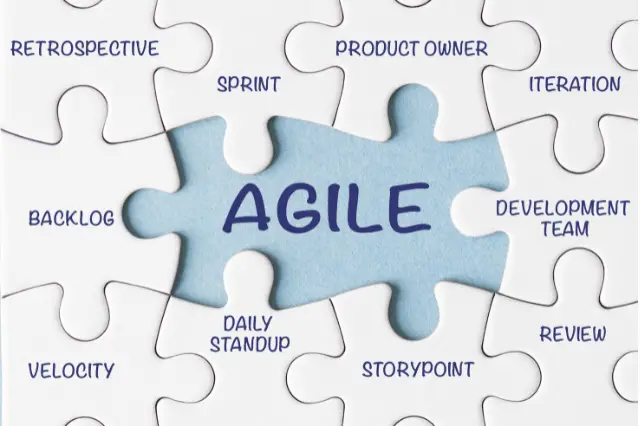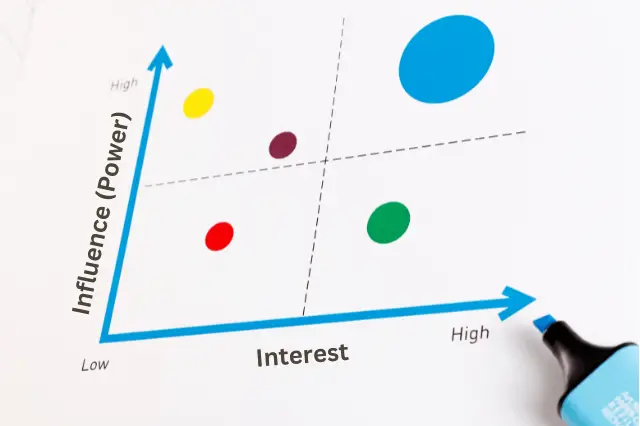Last Updated on July 13, 2025 by andrewshih
Are you facing tight project deadlines and wondering how to accelerate your schedule without compromising quality?
In project management, Crashing and Fast Tracking are two critical techniques used to speed up project timelines. But how do you decide which method is best for your situation?
This comprehensive guide will explore the ins and outs of Crashing and Fast Tracking, helping you understand their applications, benefits, drawbacks, and how to effectively use them to keep your project on track and meet your deadlines.

What is Crashing?
Crashing is a schedule compression technique where additional resources are allocated to critical path tasks to reduce their duration. This method often involves adding more personnel, increasing working hours, or utilizing more efficient equipment. While Crashing can significantly shorten project timelines, it usually increases the overall project costs.
Purpose of Crashing
The primary goal of Crashing is to expedite project completion without altering the project scope. It is particularly useful in scenarios where project deadlines are non-negotiable, and delays could lead to significant penalties or lost opportunities.
When to Use Crashing
Crashing is appropriate in the following situations:
- Tight Deadlines: When project deadlines are stringent and cannot be adjusted.
- Budget Flexibility: When there is room in the budget to accommodate the additional costs of extra resources.
- Availability of Resources: When additional resources (personnel, equipment, etc.) are available and can be mobilized quickly.
Advantages and Disadvantages of Crashing
Crashing Advantages
-
Reduces Project Duration: Significantly shortens the project timeline, helping to meet tight deadlines.
-
Enhances Schedule Control: Provides more control over the project schedule by accelerating critical tasks.
-
Improves Stakeholder Satisfaction: Meeting or beating deadlines can enhance client and stakeholder satisfaction.
Crashing Disadvantages
-
Increases Costs: The addition of resources often leads to higher project costs, which may not always be feasible.
-
Potential for Burnout: Increased workload can lead to team burnout and reduced morale.
-
Quality Risks: Rushing tasks might compromise the overall quality of the project deliverables.
Steps to Implement Crashing
- Identify Critical Path Tasks: Determine which tasks are on the critical path and have the most significant impact on the project timeline.
- Assess Resource Availability: Evaluate the availability of additional resources and their potential impact on the project.
- Calculate Cost and Time Impact: Analyze the cost implications and the potential time savings of adding resources.
- Implement Resource Allocation: Allocate the necessary resources to critical path tasks.
- Monitor Progress: Continuously monitor the progress of crashed tasks and adjust the plan as necessary.
Common Mistakes to Avoid When Implementing Crashing
-
Overestimating Resource Availability: Ensure that additional resources are actually available and can be efficiently utilized.
-
Ignoring Team Capacity: Be mindful of the team’s workload to avoid burnout.
-
Lack of Detailed Cost Analysis: Thoroughly assess the cost implications to avoid budget overruns.
Example of Crashing
Consider a software development project with a critical task estimated to take 10 days with 2 developers. By adding 2 more developers, the task can be completed in 5 days, albeit at a higher cost. This accelerates the project timeline but increases the budget.

What is Fast Tracking?
Fast Tracking is a schedule compression technique where tasks that were originally planned to be done sequentially are executed in parallel. This approach does not increase costs but can introduce higher risks due to overlapping activities.
Purpose of Fast Tracking
The main purpose of Fast Tracking is to reduce the project timeline without incurring additional costs. It is particularly useful when budget constraints prevent the hiring of more resources.
When to Use Fast Tracking
Fast Tracking is suitable in the following situations:
- Budget Constraints: When the project budget is tight and cannot support additional costs.
- Logical Overlap: When some tasks can logically overlap without causing significant issues.
- Slack Availability: When the project schedule has inherent slack or buffer that can absorb potential delays from overlapping tasks.
Advantages and Disadvantages of Fast Tracking
Fast Tracking Advantages
-
Reduces Project Duration: Speeds up the project timeline without increasing costs.
-
Cost-Effective: Avoids additional costs associated with hiring more resources.
-
Flexibility: Provides flexibility in managing the project schedule.
Fast Tracking Disadvantages
-
Increases Risks: Overlapping tasks can introduce higher risks and potential for conflicts.
-
Potential for Rework: Miscommunications and coordination issues can lead to rework, negating time savings.
-
Team Stress: Increased complexity and coordination can stress the project team.
Steps to Implement Fast Tracking
- Identify Overlapping Tasks: Determine which tasks can be performed in parallel without significant risk.
- Adjust the Project Schedule: Modify the project schedule to reflect the overlapping tasks.
- Communicate Changes: Clearly communicate the changes to the project team to ensure alignment.
- Monitor and Manage Risks: Closely monitor the progress of overlapping tasks and manage any risks that arise.
- Adjust as Necessary: Be prepared to make adjustments based on ongoing feedback and issues.
Common Mistakes to Avoid When Implementing Fast Tracking
-
Overlapping Incompatible Tasks: Ensure that overlapping tasks do not cause conflicts or dependencies.
-
Poor Communication: Maintain clear and frequent communication among team members to avoid miscoordination.
-
Inadequate Risk Management: Be proactive in identifying and mitigating risks associated with task overlaps.
Example of Fast Tracking
In a construction project, starting interior design work before the building’s structural completion can fast track the schedule. This approach assumes that no major structural changes are expected that could impact the interior design.
Crashing vs Fast Tracking Comparison
| Aspect | Crashing | Fast Tracking |
|---|---|---|
| Cost | Increases due to additional resources | Remains constant |
| Risk | Low to moderate | High due to task overlap |
| Application | When budget allows and deadlines are tight | When budget is constrained and tasks can overlap |
| Impact on Quality | Potentially negative | Potentially negative due to rework |
Alternatives to Crashing and Fast Tracking
While Crashing and Fast Tracking are popular techniques, other methods can also help accelerate project timelines:
- Resource Leveling: Adjusts start and finish dates based on resource constraints, balancing workload without significantly altering the project duration.
- Scope Reduction: Decreases the project scope to meet deadlines, focusing on the most critical deliverables.
- Extended Work Hours: Temporarily increases working hours to speed up task completion without adding more resources.
Tools for Crashing and Fast Tracking
Various project management tools can assist in implementing Crashing and Fast Tracking:
- Microsoft Project: A comprehensive tool for detailed scheduling and resource management.
- Primavera P6: Suitable for complex project schedule management, particularly in large-scale projects.
- Smartsheet: A collaborative project management tool that facilitates tracking and communication among team members.
Conclusion
Both Crashing and Fast Tracking are valuable techniques for project managers seeking to accelerate project timelines.
Crashing involves adding resources, which increases costs but can significantly reduce project duration.
Fast Tracking, on the other hand, involves overlapping tasks, which can maintain costs but introduce higher risks.
Understanding the applications, advantages, and disadvantages of each method allows project managers to make strategic decisions that align with project goals and constraints.
By carefully implementing these techniques and leveraging appropriate tools, project managers can effectively manage project schedules and deliver successful outcomes.
FAQ
Which is better: Crashing or Fast Tracking?
Neither technique is inherently better; the choice depends on the project’s specific circumstances. Crashing is suitable when additional budget is available, and reducing the timeline is critical. Fast Tracking is ideal for projects with budget constraints but where tasks can logically overlap. Consider the project’s cost, risk tolerance, and resource availability to decide which method to use.
Can Crashing and Fast Tracking be used together?
Yes, combining both techniques can further compress the project schedule. However, it requires careful planning to balance costs and risks.
How do you measure the success of Crashing or Fast Tracking?
Success can be measured by comparing the original and revised project timelines, assessing budget adherence, and evaluating the quality of deliverables.
How does stakeholder communication change when using Crashing or Fast Tracking?
Frequent updates are essential to manage expectations and ensure alignment with the accelerated schedule. Transparency about risks and costs is crucial.
What are some signs that Crashing is not working effectively?
- Cost Overruns: When costs exceed the budget without significant time savings.
- Decreased Quality: If accelerated tasks lead to poor-quality deliverables.
- Team Burnout: Signs of fatigue and decreased morale among team members.
How do you handle increased risks associated with Fast Tracking?
- Risk Management Plan: Develop a comprehensive risk management plan to identify, assess, and mitigate risks.
- Regular Monitoring: Continuously monitor overlapping tasks and be prepared to make adjustments as needed.
- Effective Communication: Ensure clear communication among team members to avoid miscoordination.
What role does project complexity play in choosing between Crashing and Fast Tracking?
Complex projects with many interdependencies might benefit more from Crashing, as Fast Tracking could increase the risk of conflicts and rework.
Are there any ethical considerations when using Crashing or Fast Tracking?
Yes, it’s essential to consider the impact on team well-being, ensure fair allocation of work, and maintain quality standards without cutting corners.



